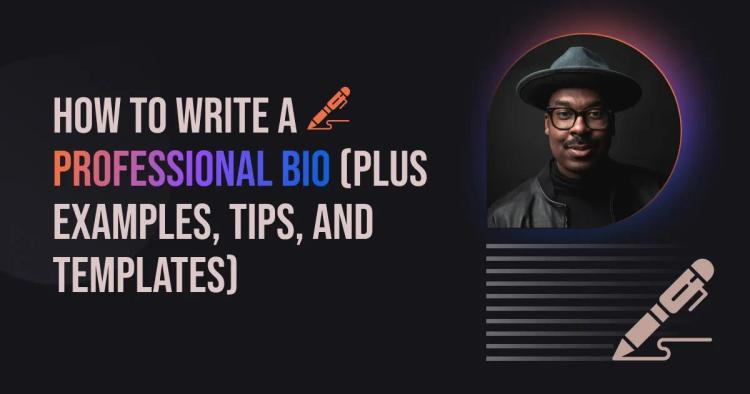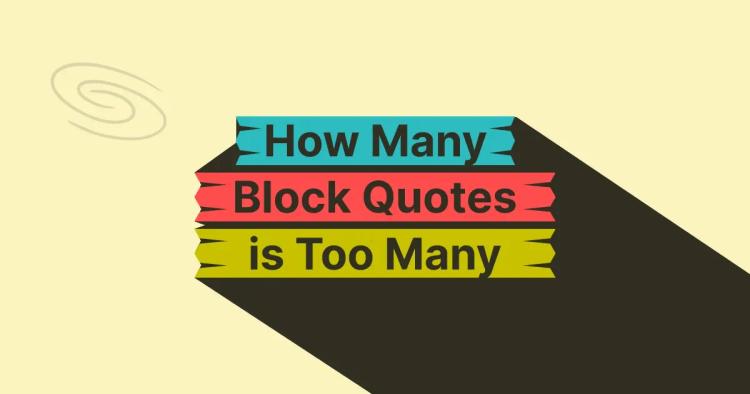Picture this: you're at a party, and someone asks, "How's your day?" Now, imagine two responses. The first one, "Good." The second, "Good, but a bit hectic—I spilled coffee on my favorite shirt this morning." That tiny addition of "but a bit hectic" is the nuance. It's the extra layer that turns a basic answer into a story.

Now, let's zoom in. Nuance isn't just about words; it's the hidden flavors in communication. It's the difference between "I love your idea" and "I appreciate the creativity in your idea; it adds a fresh perspective." Nuance is the spice that makes our conversations more interesting and our connections deeper.
ᴀᴅᴠᴇʀᴛɪsᴇᴍᴇɴᴛ
Importance of Understanding Nuance
Imagine playing a video game without sound—it's a bit dull, right? Understanding nuance is like turning on the sound in our communication. It adds the emotions, the context, and the subtle nuances (yes, pun intended!) that make our words meaningful.
In a world full of diverse thoughts and feelings, nuance is the key to unlocking understanding. It's the difference between saying, "I'm happy for you" and "I share in your joy." The latter is nuanced; it's not just happiness; it's a connection.
Think of nuance as the extra ingredient in your favorite recipe. Without it, communication can be a bit bland. But with nuance, it becomes a rich, flavorful experience. As we journey through this exploration of nuance, let's uncover its layers, discover its magic, and understand why it's the secret sauce of effective communication.
Defining Nuance

Literal Definition
Let's start with the basics. What is nuance? Imagine you have a favorite color, say blue. But there are so many shades of blue—sky blue, navy blue, baby blue. Nuance is like those different shades; it's the subtle variations that give a word or a phrase its unique color.
The literal definition of nuance is like saying, "It's the tiny brushstrokes that make a painting beautiful." In other words, it's those small details that add depth and character. For example, the difference between "I like your idea" and "I like your idea" lies in the nuance of 'really.' It's that small word that paints a brighter shade of appreciation.
Contextual Understanding
Now, let's talk about context. Imagine you have a secret language with your best friend. When you say, "I'm fine," they know there's more to it. That's nuance in action. It's the unspoken understanding between words that adds a layer of meaning.
Nuance is like a friend who knows you so well they can read between the lines. It adapts to the situation, changing its colors based on where you are and who you're talking to. Saying, "I'm fine" to your boss might have a different nuance than saying it to your best friend. Nuance is the language within the language.
Nuance in Language and Communication
Now, let's dive into the world of language. It's vast, like an ocean, and nuance is the gentle current that shapes it. Imagine you're telling a joke. The nuance is in the timing, the delivery, and the subtle hints that make it funny. Without nuance, it might fall flat.
In everyday conversations, nuance is like a dance. It's the difference between saying, "I guess I'll see you later" and "I'm looking forward to seeing you later." The nuance here is in the enthusiasm, turning a casual statement into a warm expression of connection.
Understanding nuance is like having a map of this vast linguistic terrain, guiding us through the intricacies of expression.
ᴀᴅᴠᴇʀᴛɪsᴇᴍᴇɴᴛ
Examples of Nuance

Word Choice
Let's play with words for a moment. Imagine you're describing a delicious meal. Saying it's "good" is one thing but calling it "scrumptious" or "mouthwatering" adds a nuance of excitement. Word choice is like choosing the right spice for your dish; it enhances the flavor.
Consider this: "I like your idea." Now, add a nuance: "I genuinely like your innovative idea; it brings a fresh perspective to the discussion." The nuance here is in the extra details, turning a simple liking into a heartfelt appreciation.
Tone and Inflection
Now, let's talk about how we say things. Think of a friend asking, "Are you coming to the party?" Saying "I don't know" with a hesitant tone suggests uncertainty. But saying it with a cheerful tone might mean you're considering it. Nuance is the melody in our speech; it's the tune that adds emotion to our words.
Imagine saying, "I'm fine" in different tones. A cheerful tone might convey genuine happiness, while a tired tone could hint at hidden stress. Nuance in tone is the difference between a casual chat and a heartfelt conversation.
Cultural Nuances
Cross-Cultural Communication
Now, let's take a trip around the world. Different cultures have different ways of expressing things. In some cultures, directness is valued, while in others, there's a dance of subtlety. Nuance is the bridge that helps us navigate these cultural differences, ensuring our words are understood and respected.
Imagine discussing a sensitive topic. In one culture, directness might be appreciated, while in another, a more indirect approach might be necessary. Nuance is the cultural compass that guides us in communication, fostering understanding across diverse backgrounds.
Cultural Sensitivity
Being aware of cultural nuances is like having a superpower in communication. It's the ability to navigate conversations with respect and understanding. The nuance here is the art of choosing words and expressions that consider cultural sensitivities, fostering a more harmonious exchange of ideas.
For example, in some cultures, certain topics might be considered taboo. Being nuanced in our communication means treading carefully, respecting cultural boundaries, and building bridges instead of walls.
ᴀᴅᴠᴇʀᴛɪsᴇᴍᴇɴᴛ
Significance of Nuance in Communication

Avoiding Misunderstandings
Misunderstandings can be like stepping on a banana peel—it's unexpected, and you might end up on the ground. Nuance is like having a pair of glasses that helps you see the banana peel before you step on it. It's the tool that prevents our words from being misinterpreted.
Consider this: "I can't believe you did that." Depending on the tone and context, it could be a compliment or a criticism. Nuance helps us avoid the banana peels of communication, ensuring our words are received as intended.
Enhancing Effective Communication
Imagine communication as a dance. Without nuance, it's like dancing without rhythm—it feels off. Nuance is the music that guides the dance, making each step purposeful and meaningful. Effective communication isn't just about talking; it's about connecting.
Consider saying, "I appreciate your effort." Now, add a nuance: "I truly appreciate the hard work you put into this project; it didn't go unnoticed." The nuance here transforms a simple acknowledgment into a heartfelt recognition. Nuance is the difference between talking and truly communicating.
Nuance in Writing
Writing is like painting with words. Imagine describing a sunset. Saying it's "beautiful" is one thing, but using words like "dazzling," "fiery," or "serene" adds a nuance that paints a vivid picture. Writing styles thrive on nuance; it's the brushstroke that brings words to life.
Consider the difference between a formal email and a creative story. In formal writing, nuance might be subtle and precise, while in creative writing, it could be bold and expressive. Nuance adapts to the style, adding layers to the narrative.
Subtleties in Creative Writing
Now, let's enter the realm of creativity. Imagine writing a mystery story. Nuance is the art of dropping subtle hints, creating suspense, and surprising the reader. It's the difference between a plot twist that shocks and one that falls flat.
In poetry, every word is a brushstroke on a canvas of emotions. Nuance is the rhythm, the rhyme, and the choice of metaphors that evoke feelings. It's the dance of language that turns poetry into an immersive experience. Nuance is the heartbeat of creative writing.
ᴀᴅᴠᴇʀᴛɪsᴇᴍᴇɴᴛ
The Role of Grammar Checkers in Understanding Nuance

Grammar checkers are like trusty companions in the world of writing. They catch spelling errors, ensure commas are in the right places, and make sure our sentences make sense. But can they understand nuance? That's the big question.
Imagine writing a heartfelt message and having a grammar checker say it's grammatically correct but lacks emotion. Traditional grammar checkers are like spell-checking robots—they follow the rules but miss the nuances that make our writing truly human.
Limitations of Traditional Grammar Checkers
Traditional grammar checkers are rule-based. They know the rules like a seasoned chef knows recipes. However, nuance often doesn't fit neatly into those rules. It's the extra pinch of spice that might not be in the recipe but makes the dish unforgettable.
Consider this sentence: "I love your idea." A grammar checker might say it's perfect, and technically, it is. But what if we want to convey more than just love? What if we want to express genuine appreciation? That's where the limitations of traditional grammar checkers become evident.
Copychecker's Grammar Checker Tool
Enter Copychecker—a grammar checker with a twist. It's not just about rules; it's about understanding the nuances of language. Imagine having a writing companion who not only corrects your grammar but also suggests ways to add that extra sprinkle of nuance to your words.
Imagine writing an email to your colleague. Copychecker doesn't just check if your sentences are correct; it analyzes the nuances. It might suggest replacing "good" with "exceptional" or adding a touch of warmth to make your message more impactful. It's like having a writing coach who understands the art of nuance.
Nuance Recognition Features
Copychecker goes beyond red squiggly lines. It recognizes nuance. Imagine writing a sentence that's technically correct but lacks the subtlety you want. Copychecker's nuance recognition features highlight those areas, suggesting improvements that go beyond grammar rules.
Consider this: "The presentation was okay." Copychecker might suggest changing "okay" to "informative" or "engaging," depending on the nuance you want to convey. It's like having a second pair of eyes trained not just in grammar but in the art of expression.
ᴀᴅᴠᴇʀᴛɪsᴇᴍᴇɴᴛ
Improving Nuanced Writing with Copychecker

Copychecker isn't just a grammar checker; it's a nuance enhancer. Imagine writing an important document, and you want it to not only be error-free but also impactful. Copychecker suggests changes that not only fix grammar but elevate your writing to another level of expressiveness.
Consider this: "I think this is a good proposal." Copychecker might suggest, "I believe this proposal is compelling." The nuance here is in the shift from thinking to believing and from good to compelling. It's about transforming your words to resonate more deeply with your audience.
User Experience and Benefits
Now, let's talk about the user experience. Copychecker isn't a daunting editor with a red pen; it's a friendly companion guiding you through the nuances of language. The interface is user-friendly, making it easy to understand and implement suggestions.
Imagine writing an article, and as you type, Copychecker gently highlights areas where you can add nuance. It's like having a writing mentor sitting right beside you, encouraging you to infuse your words with depth. The benefits go beyond correctness; they extend to making you a more nuanced and expressive communicator.
FAQs
What does nuance mean in simple terms?
Nuance, in simple terms, refers to the subtle shades of meaning or distinctions in expression that add depth to communication. It's the art of conveying more than what meets the eye through subtle, nuanced details.
What are nuance examples?
Examples of nuance include the careful choice of words to evoke specific emotions, variations in tone and inflection to convey different meanings and cultural subtleties that shape communication contextually.
What is a nuance synonym?
Synonyms for nuance include subtlety, distinction, shade, hint, and variation. These terms capture the idea of subtle differences and nuances in expression.
What is the meaning of nuance?
The meaning of nuance lies in the subtle and nuanced aspects of communication. It refers to the delicate shades of meaning, variations, and distinctions in language that enrich our understanding of spoken and written expressions.
ᴀᴅᴠᴇʀᴛɪsᴇᴍᴇɴᴛ
Conclusion
Nuance is the heartbeat of effective communication. It’s the subtle notes that turn a conversation into a symphony. Understanding and embracing nuance is not just about words; it's about building bridges of connection in a world where communication is key.
As we conclude this exploration of nuance, let’s encourage each other to embrace it in our daily interactions. Whether in spoken words or written text, let nuance be the brush that paints our communication with depth and understanding. After all, in the world of words, nuance is the magic that turns ordinary conversations into extraordinary connections.







